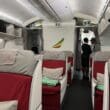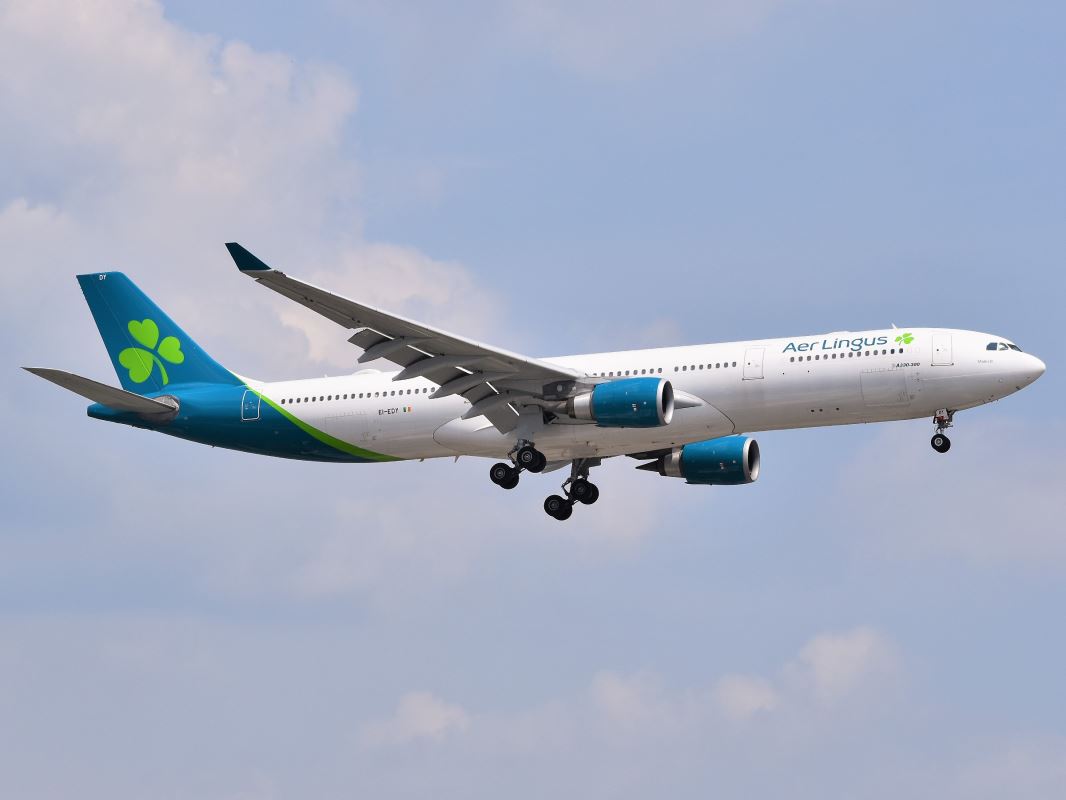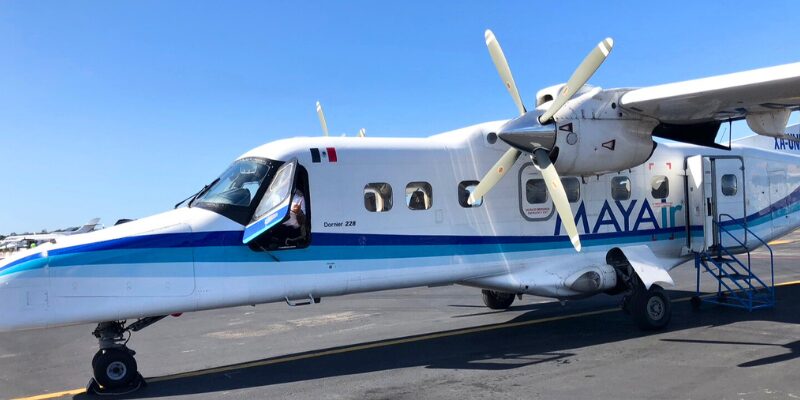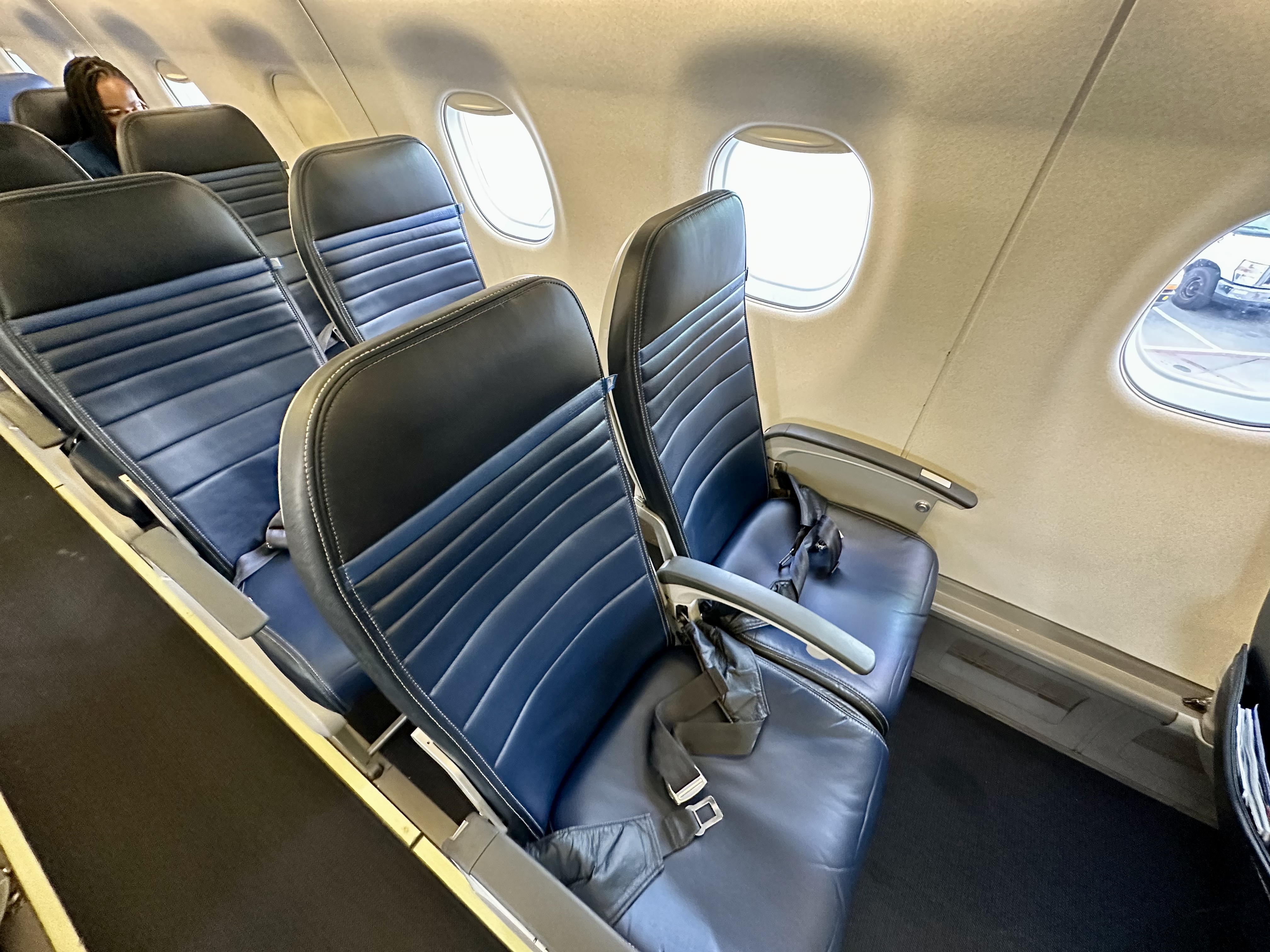Author’s Note: This review is from a flight I took in December 2018. Most of the information in this post is still accurate, and the experience is likely identical almost five years later.
Back in 2018 and 2019, my go-to beachside retreat was Cozumel, Mexico. Located just 10 miles east of Playa del Carmen, the Island of Cozumel is often lumped in with the much larger resort town of Cancun. That is despite Cozumel sitting nearly 45 miles south of Cancun.
As a result of its somewhat remote location, Cozumel offers visitors a much more relaxed and intimate beachside resort experience. Ultimately, this relaxed environment is what has drawn me to Cozumel time and time again.
However, getting to and from Cozumel can be somewhat challenging. It’s not that the island doesn’t have direct access to major Mexican and American airports. But with fewer connections than nearby Cancun International Airport, flights are often much more expensive and operate with less regularity.
Luckily, there was always a very quick and relatively inexpensive way to access Cancun International Airport. MAYAir, a small regional carrier operating in the region, once operated multiple flights a day between Cozumel and Cancun. This allowed visitors easy access to the hundreds of daily flights operating to and from Cancun.
Unfortuantely, the COVID-19 pandemic had a significant impact on MAYAir’s operations. Surprisingly, the small carrier managed to survive the pandemic. This is likely the result of Mexico remaining open to tourists throughout the entirety of the pandemic. Still, MAYAir’s former flagship route (CZM-CUN) did not survive the pandemic’s effects. MAYAir no longer operates flights between Cozumel and Cancun. According to the airline’s website, the airline no longer serves Cozumel.
I had the chance to travel on MAYAir’s Cozumel-Cancun air taxi service twice. In this post, I will recap the experience of flying between the two resort cities aboard a MAYAir Dornier 228.

A Brief History of MAYAir
MAYAir launched operations in 1994 as a charter airline focused on serving the fast-growing Riveria Maya tourist area. It wasn’t until 2009 that the airline shifted operations to serve as an air taxi operator in the region. Starting in the early 2010s, MAYAir built up its presence on the Cancun-Cozumel route. At its height, the airline operated six daily round-trip flights between the two cities.
In addition to serving both Cancun and Cozumel, MAYAir has also operated flights to other popular destinations in the region. Today, these destinations include Mérida, Veracruz, and Villahermosa. To serve these nice point-to-point leisure routes, the airline operates a fleet of piston and turboprop-powered aircraft. These include some rather unique regional prop-liners, including the Dornier 228 and Fokker 50.
What It’s Like Flying on MAYAir
While visiting Cozumel in late 2018, I was planning my return journey. At the time, American Airlines was utilizing its Boeing 787s to operate a few of its nonstop flights between Cancun and Dallas-Fort Worth. I managed to find a cheap AAdvantage redemption in business class on one of these flights. I was quick to book my flight from Cancun to Dallas without knowing how I would get to Cancun from Cozumel. That’s when I stumbled upon MAYAir.
MAYAir’s flight schedule worked perfectly with my American Airlines itinerary. Additionally, the flight was quite cheap at around $850 MXN (~$47 USD) one-way. So, I used MAYAir’s archaic early-2000s era website to book my flight from Cozumel to Cancun. The first time around, the transaction was flagged by American Express. After confirming that I was, in fact, the one booking with MAYAir, I completed my booking and, within a few hours, received my boarding pass.
MAYAir at Cozumel International Airport
MAYAir utilizes the main passenger terminal at Cozumel International Airport. Cozumel’s passenger terminal is, in my opinion, quite passenger friendly. It’s certainly not the most amenity-heavy airport terminal. However, the small passenger concourse makes for a quick walk from curbside to the gate.



The terminal also features a small VIP Lounge. The lounge is accessible with Priority Pass and is located directly in front of the passenger boarding gates. The VIP Lounge features basic amenities, including light snacks, complimentary beer, wine, and spirits, and barista-made espresso beverages.
Boarding began on time. Cozumel International Airport does not operate any boarding gates with a jetbridge, so all passengers must walk out onto the ramp for boarding. This short walk does allow for some amazing views of the other passenger aircraft on the ramp.

In-Flight Experience on MAYAir
The aircraft operating my MAYAir flight from Cozumel to Cancun was the Doriner 228. The Dornier 228 is a Swiss-German twin-turboprop aircraft built for STOL operations. STOL is the abbreviation for Short Take-Off and Landing. In short, the Dornier 228 is designed to take off and land without much runway.

This particular Dornier 228 started out with the now-defunct regional carrier, Air Guadeloupe. Based on the aircraft’s serial number, it first took to the skies sometime in the mid-1990s. Sometime in the early 2010s, it entered service with MAYAir.
The Dornier 228 features space for 19 passengers in a 1-1 configuration in the first seven rows of the aircraft. The second to last row features 2 seats side-by-side with room adjacent to these seats for passenger boarding. The final row features 3 seats across the entire length of the aircraft.



Passenger boarding is done from the back of the aircraft utilizing a rather small boarding door. The flight crew accesses the flight deck from an even smaller door at the front of the aircraft.
There is, of course, no room for any bags larger than a backpack, so all larger carry-on luggage is loaded into the cargo compartment with checked luggage.
In terms of amenities, there is in-flight entertainment on board for the first few rows. That “in-flight entertainment” is the ability to watch the flight crew perform all stages of flight as there is no door between the passenger cabin and the flight deck.
It was truly amazing watching the flight crew handle the Dornier 228. Given the lightweight nature of the aircraft, you can feel almost every movement the aircraft makes. It’s also quite loud for the duration of the flight, thanks to the two turboprop engines spinning outside.


MAYAir offers passengers an in-flight magazine which, at the time of the flight, was already more than a year old. Other seatback contents included an in-flight safety instruction card and an air sickness bag.

Both takeoff and landing provided passengers with amazing views.


The flight took about a half hour but felt closer to 10 minutes. The aircraft cruised at an altitude of about 8,000 feet, though for only a few minutes. This, again, meant amazing views of the landscape below.
Once on the ground, the aircraft parked at Cancun’s FBO terminal. The terminal is used primarily by private aircraft but also MAYAir and other regional charters. It’s about a 15-minute ride from the FBO to Terminal 3, the terminal from which American Airlines operates.

The Bottom Line
Aside from a few airlines operating essential air service routes, the United States doesn’t offer a ton of unique opportunities for avgeeks. However, Mexico, thanks to a number of small carriers operating within the region, is chock-full of avgeek opportunities. One of these small regional airlines is MAYAir.
While the airline has downsized over the past few years, there are still plenty of opportunities to catch a flight aboard one of the airline’s Dornier 228s or Fokker 50s.
Have you ever flown MAYAir? What’s the most unique regional airline you’ve flown with?













I lovethis airline have used many times so very happy to hear its coming back. Much success!
Super cool that you got to make use of this route. I’ve been a big fan of CZM for the reasons that you mentioned, and was hoping to leverage this route when flying directly to or from czm wasn’t optimal due to pricing. Hopefully the route will return one day.
“most of the information is still accurate…”
Except the most important part – this route no longer exists. LOL